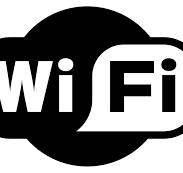
Imagine life without Wi-Fi. Yes, that’s right, try to imagine a world where your smartphone suddenly turns into a fashionable but helpless calculator. Where, instead of Netflix, you look out the window, hoping to catch an interesting story from the life of your neighbors. Where instead of sending a quick message to a friend, you write a letter and wait for a response for weeks, just like in the good old days… Sounds scary, doesn’t it?
It was wireless technology that saved us from this digital stone age. They have become invisible threads that connect us to the world, allowing us to communicate, work, have fun, and even fall in love from the comfort of our couch (although the latter is not recommended :)). Undoubtedly, such technologies make our lives more convenient, more interesting, and perhaps a little lazier. But who cares when you can order a pizza while watching your favorite TV show?
So let’s dive into this fascinating world of wireless wonders and find out how they have changed and continue to change our lives, businesses, and even the entire planet.
How did it all start?
The history of wireless communication began in the late 19th century, when the world was still analog, not digital. Namely, it all started with James Clerk Maxwell, who predicted the existence of radio waves, and Heinrich Hertz confirmed these theories experimentally. A little later, an invention appeared that turned the idea of communication upside down – an Italian genius named Guglielmo Marconi invented the now well-known radio in the 1890s. A real breakthrough, like the invention of the wheel, only for communication. Radio was the first step into the world of wireless technologies, paving the way for the development of television, mobile communications and the Internet. Thanks to it, people could listen to news, music, radio shows, and lectures without leaving their homes. It was really like magic, bringing people together from all over the country and even the world.
Since then, technology has been developing at the speed of light. TVs, radios, and other amazing devices appeared. From the bulky “bricks” of the first mobile phones, we have moved on to elegant smartphones that can do everything from make calls to order a pizza. And Wi-Fi routers have become as commonplace in our homes as refrigerators or microwaves.
Wireless technology standards and protocols were changing faster than the fashion for jeans. First, there was analog communication, then digital, and then there were different generations of mobile communication (2G, 3G, 4G, 5G), each of which promised speeds like a jet plane. All of this has made our lives more convenient, more interesting, and, of course, more dependent on the power outlet.
What’s next for us?
Forget about tangled wires! The future of wireless technology is already knocking on the door, promising to transform the world into a real miracle. Smartphones will charge themselves, cars will “communicate” with each other.
Get ready for wireless technologies to become as commonplace as the air we breathe. They will surround us from all sides and, of course, make our lives more convenient, safe, and efficient.
The smart alarm clock will not only wake you up, but also make coffee, play your favorite music, and tell you the weather. The refrigerator will order groceries by itself, and the car will find a free parking space and park without your help. Doctors will diagnose diseases and perform surgeries remotely using virtual reality and robotic arms. Farmers will be able to monitor the condition of their fields and crops using drones and sensors, and cities will become smarter thanks to the Internet of Things.
This is just the tip of the iceberg of the opportunities offered by the wireless technologies of the future. Who knows, maybe soon we will be able to charge our gadgets with the power of thought or even teleport using Wi-Fi. But this is a topic for another story…

